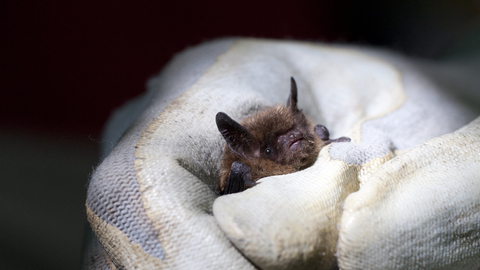
The
small, shaggy-furred Brandt's bat roosts in all sorts of houses, old or
modern. It is similar to the whiskered bat and they often roost
together, but in separate colonies. It feeds low to the ground in
woodland and near water.
Species information
Category
- Mammals
Statistics
Length: 3.8-5.0cmWingspan: 21-24cm
Weight: 4.5-9.5g
Average lifespan: up to 40 years
Conservation status
Protected
in the UK under the Wildlife and Countryside Act, 1981. European
Protected Species under Annex IV of the European Habitats Directive.
When to see
April to OctoberAbout
The Brandt's bat is a small bat that is very similar to the whiskered bat; in fact, these two species were only separated in 1970. All UK bats are nocturnal, feeding on midges, moths and other flying insects that they find in the dark by using echolocation. Brandt's bats emerge soon after sunset and feed on moths and small insects low to the ground in woodland and near water. They roost in all kinds of houses and may use bat boxes. During the summer, females form maternity colonies and have just a single pup. Brandt's bats hibernate in caves and tunnels over winter.How to identify
The Brandt's bat is a small bat with shaggy, dark grey or light brown fur on its back. Its face is pinkish and the fur on its belly is pale grey. It is very similar in appearance to the Whiskered bat, but is slightly larger.Distribution
Found throughout England and Wales, but more common in the north and west.Did you know?
Brandt’s and whiskered bats may roost in the same roof space, using separate parts for their individual colonies. They can also be found with either pipistrelles or brown long-eared bats.

ConversionConversion EmoticonEmoticon